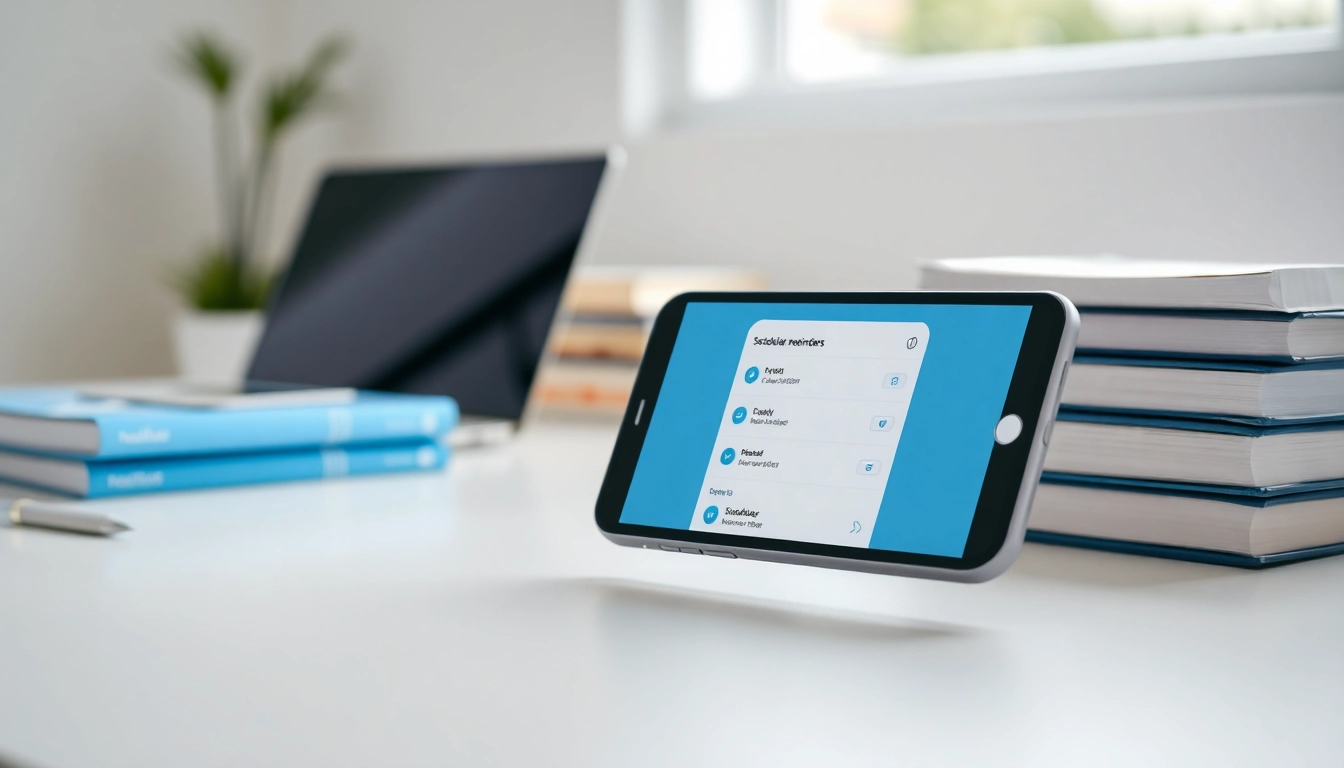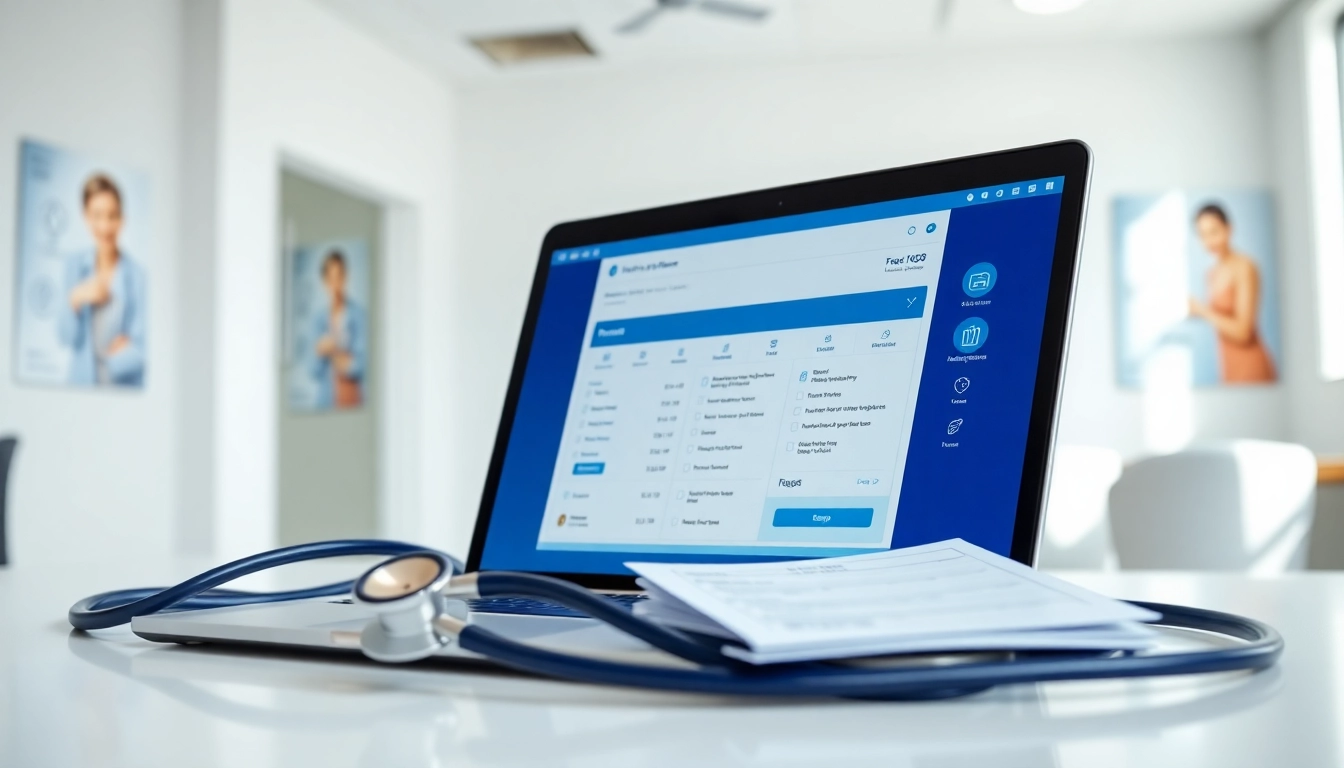Understanding ePrescription Apps
What are ePrescription Apps?
ePrescription apps are digital tools designed to streamline the process of prescribing medications. They enable healthcare providers to send prescriptions electronically to pharmacies, reducing the risks associated with manual, paper-based systems. These apps not only facilitate communication between patients and providers but also empower individuals to manage their prescriptions easily. By digitizing the prescription workflow, they enhance overall healthcare delivery and patient experience.
How ePrescription Apps Work
The functionality of ePrescription apps involves several key processes. First, healthcare providers input prescription details into the app during patient consultations. The app may then validate the prescribed medication against databases to prevent errors related to drug interactions or allergies. Once validated, the prescription is sent electronically to the patient’s chosen pharmacy, where it can be filled promptly.
Moreover, many ePrescription apps incorporate features for medication reminders, refill requests, and even health tracking, ensuring patients remain engaged in their treatment plans. For real-world application, pen-and-paper prescriptions are often prone to errors due to illegibility or miscommunication; ePrescription apps help eliminate these risks.
Key Features of ePrescription Apps
Common features of ePrescription apps include:
- Electronic Submission: Direct transmission of prescriptions to pharmacies.
- Medication History Tracking: Access to patients’ medication histories helps providers avoid adverse drug interactions.
- Patient Alerts and Reminders: Notifications for medication refills and dosage schedules ensure higher adherence rates.
- User-Friendly Interface: Intuitive navigation helps both patients and providers engage effectively.
- Data Security: Robust security measures protect sensitive patient information.
Advantages of Using ePrescription Apps
Improved Medication Adherence
One of the primary advantages of using eprescription apps is their ability to enhance medication adherence among patients. With features such as reminders for medication intake and refill notifications, patients are less likely to miss doses or forget to refill their prescriptions. Research indicates that consistent reminders via mobile applications can significantly increase patient adherence rates, leading to improved health outcomes and reduced overall healthcare costs.
Streamlined Prescription Management
ePrescription apps create a more organized prescription management system. They facilitate real-time updates to medication lists, which help both patients and healthcare providers stay informed about current treatment plans. Features such as direct communication between the pharmacy and healthcare providers simplify refill requests and adjustments, ultimately reducing the time and effort traditionally required for prescription management. This streamlining of processes allows providers to allocate more time to patient care rather than administrative tasks.
Enhanced Communication between Patients and Providers
Effective communication in healthcare is vital, and ePrescription apps significantly enhance this aspect. By enabling direct messaging and sharing of medical information, these apps foster dialogue between patients and healthcare providers. This improved communication can address patient concerns, clarify prescription instructions, and facilitate more proactive healthcare engagement. As a result, patients are more likely to feel connected to their healthcare team, which can lead to better health outcomes.
Challenges and Considerations
Potential Limitations of ePrescription Apps
While ePrescription apps offer numerous benefits, they also have potential limitations. Resistance to change among healthcare providers and patients accustomed to traditional methods may hinder widespread adoption. Technical issues and software malfunctions can disrupt prescription processes, creating inconvenience and frustration. Additionally, the effectiveness of these apps is reliant on internet connectivity; outages or lack of access can compromise their functionality.
Addressing User Concerns
To mitigate barriers to adoption, it is crucial to address user concerns directly. Training sessions for healthcare staff can increase comfort levels in using ePrescription apps, while patient education can demonstrate the benefits and ease of use. Offering support channels for troubleshooting technical issues can also provide reassurance that assistance is always available. Tailoring the technology to meet users’ needs through feedback can improve user experience over time.
Ensuring Data Security and Privacy
With the increasing reliance on digital health tools, ensuring data security and privacy is paramount. ePrescription apps must comply with regulations such as HIPAA to protect patient information. Implementing robust encryption, secure login processes, and regular security audits can help safeguard sensitive data from breaches. Providers should also communicate their data protection practices transparently to build trust with their patients.
Best Practices for Implementing ePrescription Apps
Selecting the Right App for Your Needs
Choosing the right ePrescription app is critical for maximizing its potential benefits. Healthcare providers should evaluate the app’s features, usability, and compatibility with existing systems. Piloting several options through user feedback and trial runs can help assess which app aligns best with practice needs. Look for an app that integrates seamlessly with electronic health record systems, ensuring a smooth transition and enhancing overall workflow.
Training Healthcare Staff
Training is vital for successful implementation. Conduct comprehensive training sessions focused on the app’s functionalities, troubleshooting, and best practices. Hands-on training encourages familiarity and reduces anxiety about using new technology. Regular refresher courses can also keep staff informed of any updates or enhancements to the app’s features.
Engaging Patients Effectively
Patient engagement plays a significant role in the successful adoption of ePrescription apps. Clear communication about the app’s benefits and how it simplifies medication management can enhance patient receptiveness. Offering support through how-to guides and troubleshooting assistance can encourage patients to utilize the app effectively. Continuous engagement through reminders and updates can foster a sense of ownership among patients regarding their medication management.
Measuring Success and Impact
Tracking Improvement in Patient Outcomes
To evaluate the impact of ePrescription apps, healthcare providers should establish metrics for success in patient outcomes. Monitoring adherence rates, medication errors, and overall patient satisfaction can provide insights into the app’s effectiveness. Case studies showcasing improved health outcomes can also illustrate the app’s benefits, fostering buy-in from both providers and patients.
Analyzing User Feedback
User feedback offers valuable insights for ongoing improvement. Regular surveys and focus groups can highlight areas where the app excels or requires enhancements. Encouraging open dialogue with users can foster trust and facilitate adjustments to better meet their needs. By creating a feedback loop, providers can continuously refine app offerings to align with user expectations.
Assessing Cost Efficiency
Finally, analyzing the cost efficiency of ePrescription app implementation is essential for understanding the return on investment. Tracking costs related to administrative tasks prior to app implementation and comparing them to costs after implementation can demonstrate financial impact. Evaluating patient outcomes against overall healthcare costs can also illustrate the app’s value in promoting better health while minimizing expenses.



